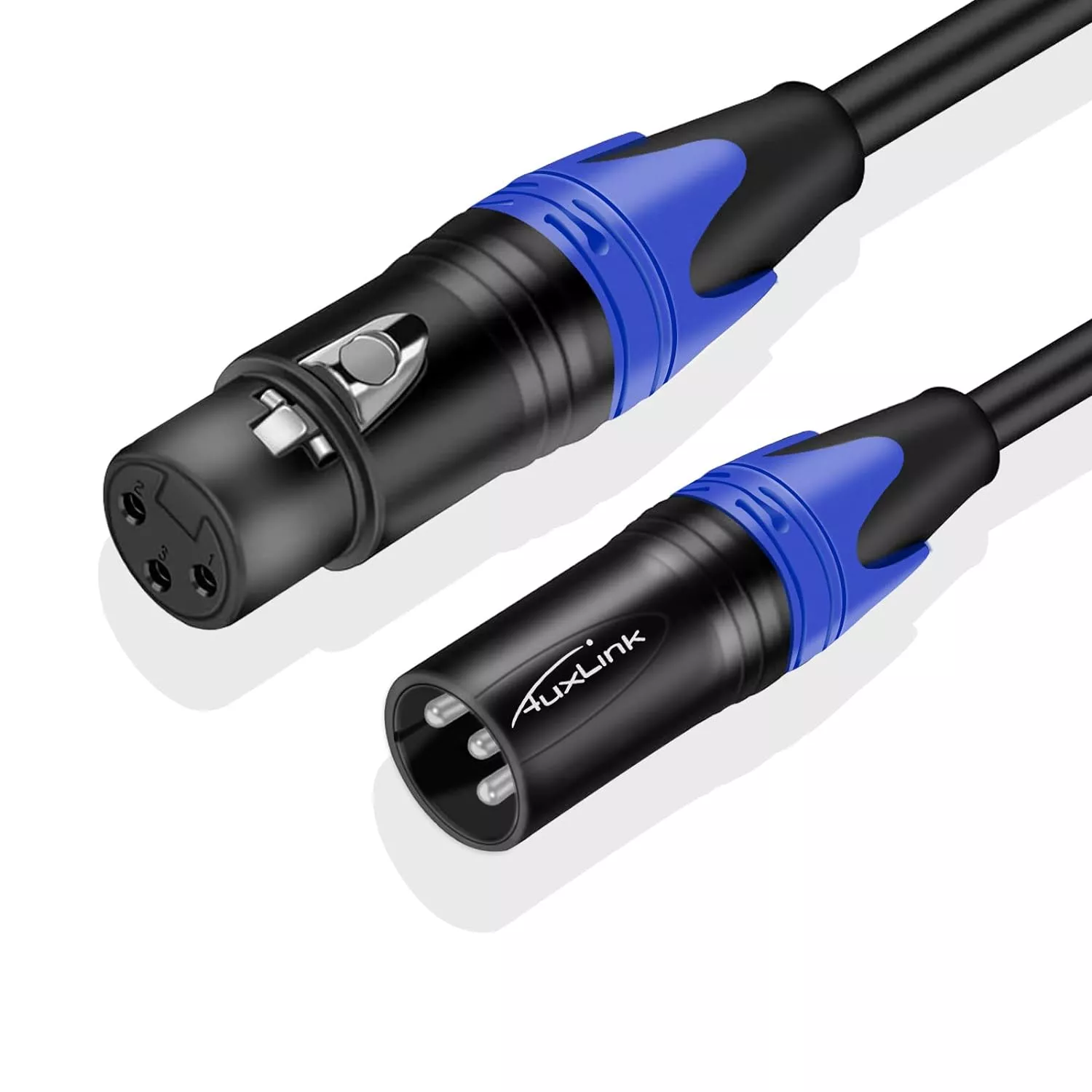
In the world of audio equipment, having reliable cables is crucial for optimal performance. AuxLink’s XLR Microphone Cables stand out with their impressive build quality and sound fidelity. This article delves deep into the features, benefits, and user feedback surrounding these 1.5ft XLR cables, ensuring you have all the necessary information to make an informed decision.
Product Features
| Feature | Description |
|---|---|
| Compatibility | Designed for 3-pin connectors, these cables are suitable for microphones, stage lighting, mixing boards, and more. |
| Sound Quality | The cables feature 24AWG oxygen-free copper conductors, ensuring lossless signal transmission and reducing noise interference. |
| Durability | Constructed with high-elastic PVC and zinc alloy housing, these cables resist wear, cracking, and tangling. |
| Length | Available in 1.5ft length, ideal for various setup needs in both studio and live environments. |
| Connector Design | Self-locking male to female connectors ensure a stable connection and easy plugging/unplugging. |
Product Overview
| Pros | Cons |
|---|---|
| High-quality sound transmission with no noise. | Limited to a short length of 1.5ft. |
| Durable materials that extend cable life. | May not meet the needs for long-distance setups. |
| Versatile for numerous audio applications. | Higher price point compared to generic options. |
Understanding the Importance of Quality Cables
When it comes to XLR microphones, understanding the features that set AuxLink cables apart is essential for anyone serious about audio quality. First and foremost, the construction of these cables is designed with durability in mind. The connectors are crafted from high-grade materials that resist wear, ensuring a reliable connection whether you’re in a bustling live setting or a controlled studio environment. I’ve noticed firsthand how this sturdy design minimizes the risk of signal loss, which can be crucial during a live performance.
Moreover, AuxLink’s cables offer excellent shielding, reducing interference from external sources. This feature is particularly beneficial in locations filled with electrical noise, such as concerts or crowded studios. I distinctly remember a gig where I switched to AuxLink cables; the clarity of sound was noticeably enhanced, and the feedback issues experienced earlier vanished.
Additionally, these cables are compatible with a wide array of audio equipment, making them versatile options for various setups. From professional mixing consoles to basic recording interfaces, I found that AuxLink cables deliver consistent performance across the board. Users rave about their longevity and superior performance—many have declared that investing in these premium cables has transformed their overall audio experience, eliminating frustrations typically associated with cheaper alternatives. This level of satisfaction reflects the high standards maintained in AuxLink’s craftsmanship.
Exploring the Features of AuxLink XLR Microphone Cables
When it comes to the AuxLink XLR Microphone Cables, a closer look at their features reveals why they’re a preferred choice for audio professionals. The materials used in the construction of these cables are top-tier; with high-purity copper conductors, you’re guaranteed excellent conductivity and minimal signal loss. This translates directly to richer, more vibrant sound quality, whether you are live on stage or recording in the studio.
The design of AuxLink cables is another standout aspect. They boast dual shielding technology that protects against interference, ensuring a clean signal even in environments with multiple electronic devices. Furthermore, the durable nylon Braided exterior not only enhances flexibility but also provides the ruggedness needed to withstand the rigors of frequent use. Users often praise this feature, noting that unlike other cables, AuxLink cables do not tangle easily and can endure the inevitable twists and turns of an active performance.
Compatibility is also a breeze with AuxLink XLR cables. Their standard XLR connectors fit seamlessly with a variety of microphones, mixing boards, and audio interfaces. This universal compatibility means that you’re not locked into a specific setup—something many sound engineers appreciate. One user mentioned, “I’ve switched my entire rig to AuxLink; the difference in sound clarity is noticeable, and I love how they work with everything!”
By addressing craftsmanship, design, and compatibility, AuxLink XLR Microphone Cables offer a product that not only delivers superior performance but also enhances user satisfaction.
Conclusions
In summary, AuxLink XLR Microphone Cables offer quality craftsmanship and excellent audio fidelity, making them a valuable investment for both professionals and enthusiasts. While they are slightly more expensive and shorter in length, their durability and sound performance justify the cost. If you’re serious about audio quality, these cables are worth considering.